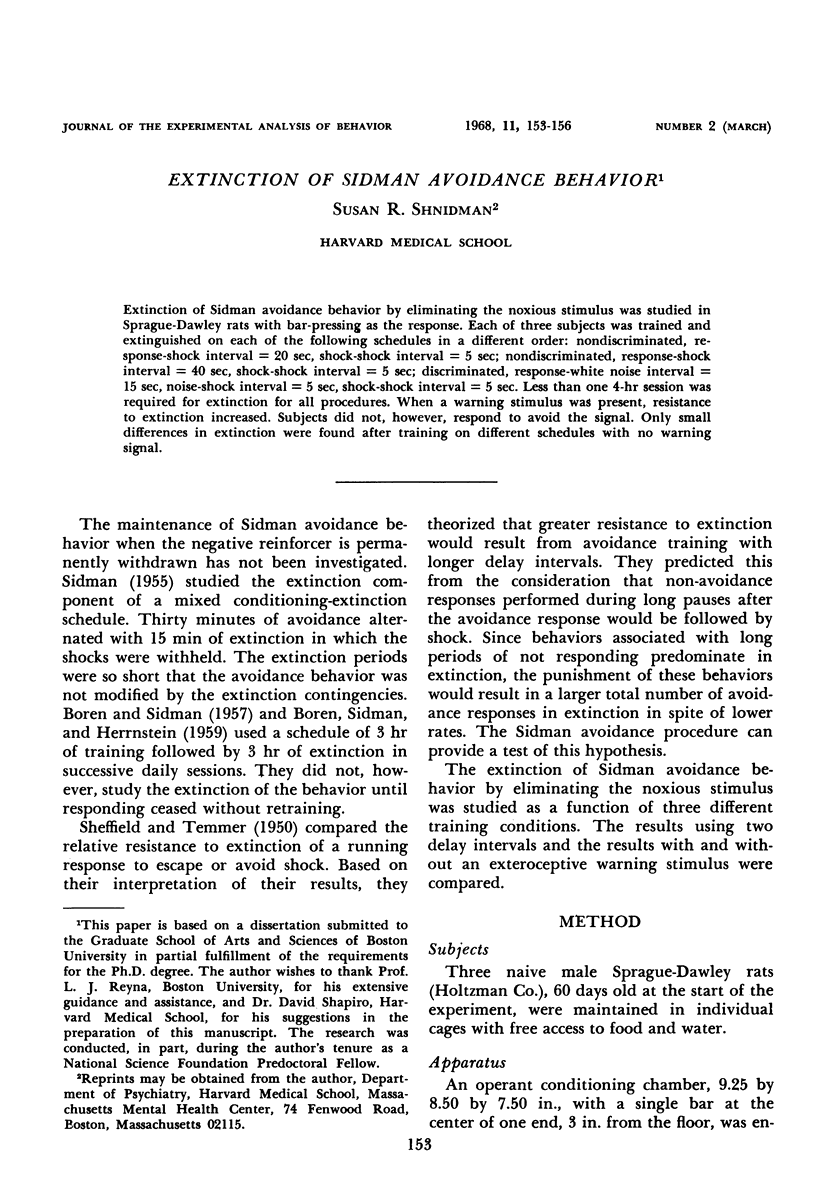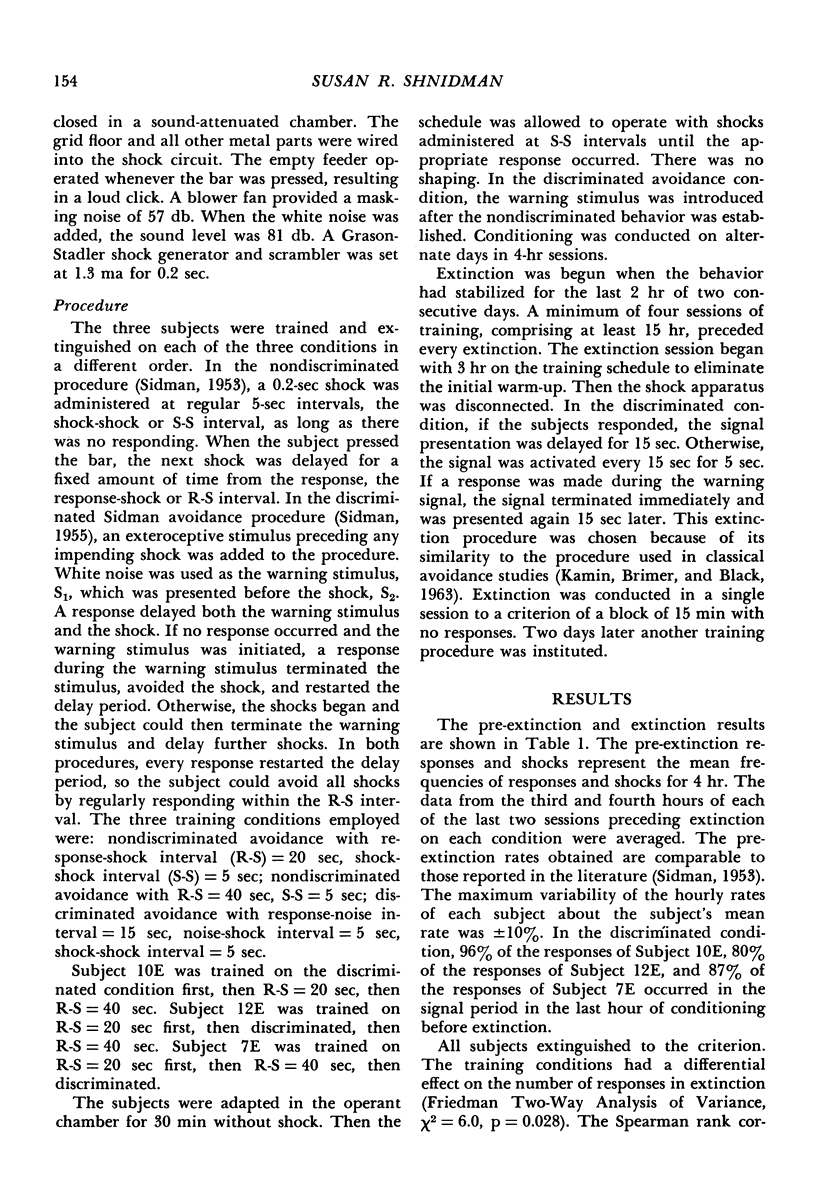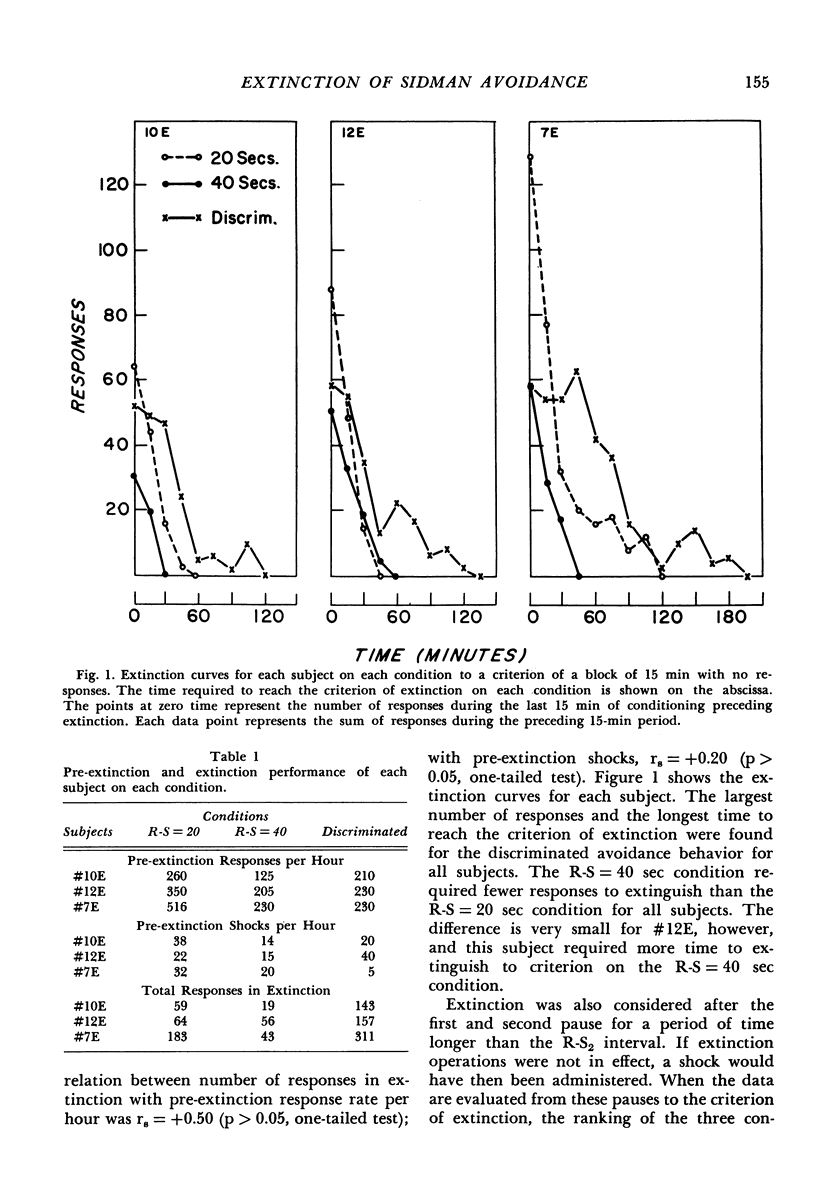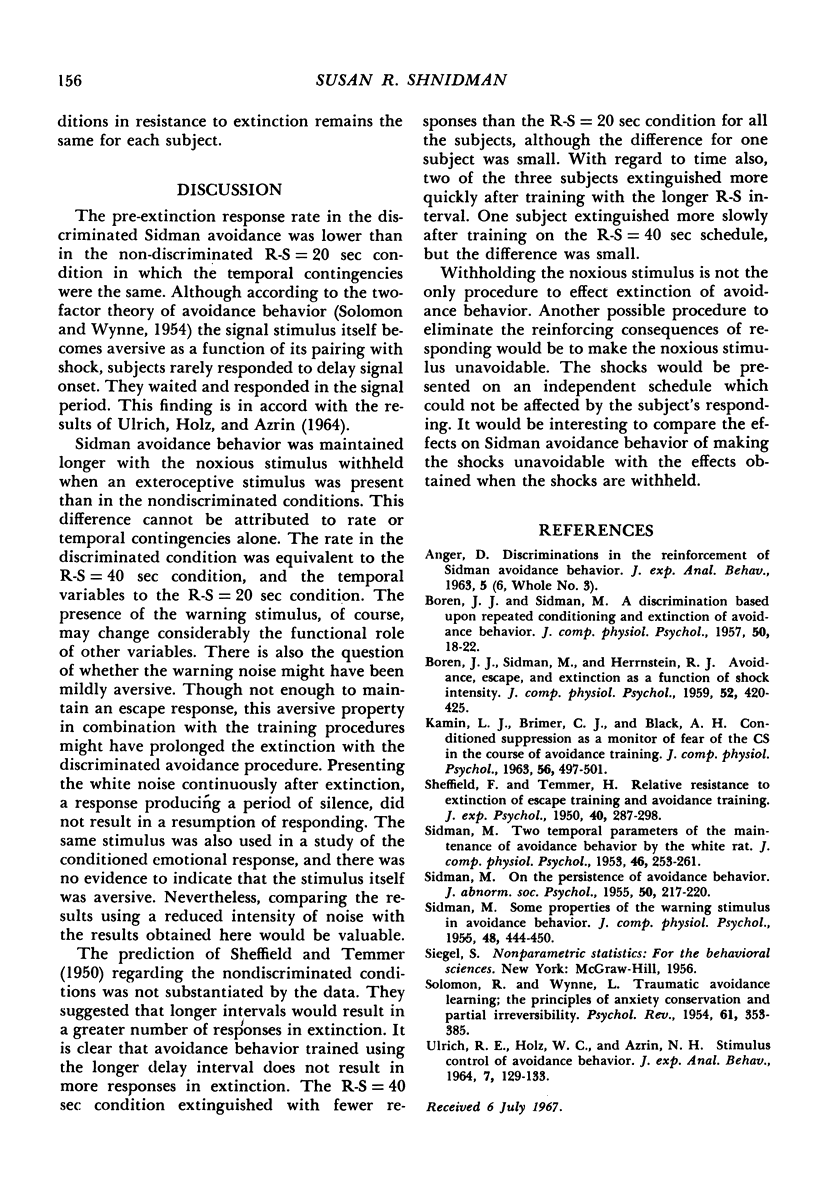Abstract
Extinction of Sidman avoidance behavior by eliminating the noxious stimulus was studied in Sprague-Dawley rats with bar-pressing as the response. Each of three subjects was trained and extinguished on each of the following schedules in a different order: nondiscriminated, response-shock interval = 20 sec, shock-shock interval = 5 sec; nondiscriminated, response-shock interval = 40 sec, shock-shock interval = 5 sec; discriminated, response-white noise interval = 15 sec, noise-shock interval = 5 sec, shock-shock interval = 5 sec. Less than one 4-hr session was required for extinction for all procedures. When a warning stimulus was present, resistance to extinction increased. Subjects did not, however, respond to avoid the signal. Only small differences in extinction were found after training on different schedules with no warning signal.
Full text
PDF



Selected References
These references are in PubMed. This may not be the complete list of references from this article.
- BOREN J. J., SIDMAN M. A discrimination based upon repeated conditioning and extinction of avoidance behavior. J Comp Physiol Psychol. 1957 Feb;50(1):18–22. doi: 10.1037/h0045142. [DOI] [PubMed] [Google Scholar]
- BOREN J. J., SIDMAN M., HERRNSTEIN R. J. Avoidance, escape, and extinction as functions of shock intensity. J Comp Physiol Psychol. 1959 Aug;52:420–426. doi: 10.1037/h0042727. [DOI] [PubMed] [Google Scholar]
- SHEFFIELD F. D., TEMMER H. W. Relative resistance to extinction of escape training and avoidance training. J Exp Psychol. 1950 Jun;40(3):287–298. doi: 10.1037/h0055980. [DOI] [PubMed] [Google Scholar]
- SIDMAN M. On the persistence of avoidance behavior. J Abnorm Psychol. 1955 Mar;50(2):217–220. doi: 10.1037/h0039805. [DOI] [PubMed] [Google Scholar]
- SIDMAN M. Some properties of the warning stimulus in avoidance behavior. J Comp Physiol Psychol. 1955 Dec;48(6):444–450. doi: 10.1037/h0047481. [DOI] [PubMed] [Google Scholar]
- SIDMAN M. Two temporal parameters of the maintenance of avoidance behavior by the white rat. J Comp Physiol Psychol. 1953 Aug;46(4):253–261. doi: 10.1037/h0060730. [DOI] [PubMed] [Google Scholar]
- SOLOMON R. L., WYNNE L. C. Traumatic avoidance learning: the principles of anxiety conservation and partial irreversibility. Psychol Rev. 1954 Nov;61(6):353–385. doi: 10.1037/h0054540. [DOI] [PubMed] [Google Scholar]
- ULRICH R. E., HOLZ W. C., AZRIN N. H. STIMULUS CONTROL OF AVOIDANCE BEHAVIOR. J Exp Anal Behav. 1964 Mar;7:129–133. doi: 10.1901/jeab.1964.7-129. [DOI] [PMC free article] [PubMed] [Google Scholar]


